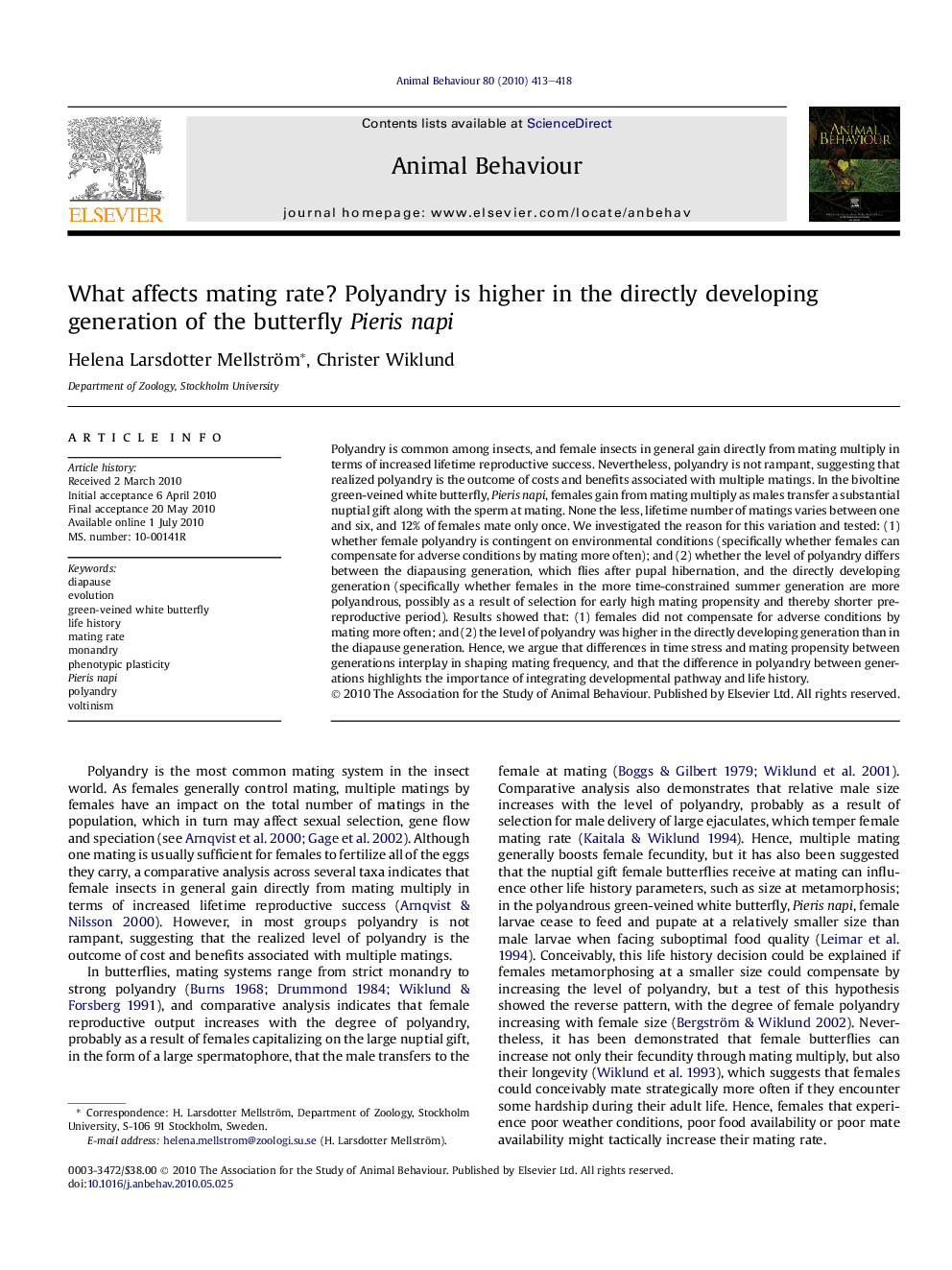| Article ID | Journal | Published Year | Pages | File Type |
|---|---|---|---|---|
| 2417196 | Animal Behaviour | 2010 | 6 Pages |
Polyandry is common among insects, and female insects in general gain directly from mating multiply in terms of increased lifetime reproductive success. Nevertheless, polyandry is not rampant, suggesting that realized polyandry is the outcome of costs and benefits associated with multiple matings. In the bivoltine green-veined white butterfly, Pieris napi, females gain from mating multiply as males transfer a substantial nuptial gift along with the sperm at mating. None the less, lifetime number of matings varies between one and six, and 12% of females mate only once. We investigated the reason for this variation and tested: (1) whether female polyandry is contingent on environmental conditions (specifically whether females can compensate for adverse conditions by mating more often); and (2) whether the level of polyandry differs between the diapausing generation, which flies after pupal hibernation, and the directly developing generation (specifically whether females in the more time-constrained summer generation are more polyandrous, possibly as a result of selection for early high mating propensity and thereby shorter prereproductive period). Results showed that: (1) females did not compensate for adverse conditions by mating more often; and (2) the level of polyandry was higher in the directly developing generation than in the diapause generation. Hence, we argue that differences in time stress and mating propensity between generations interplay in shaping mating frequency, and that the difference in polyandry between generations highlights the importance of integrating developmental pathway and life history.
